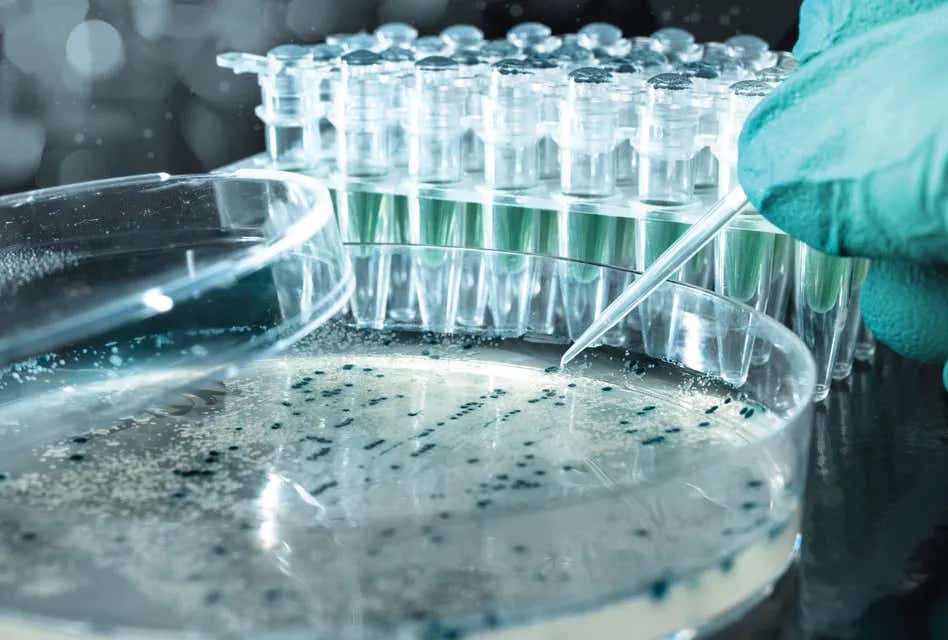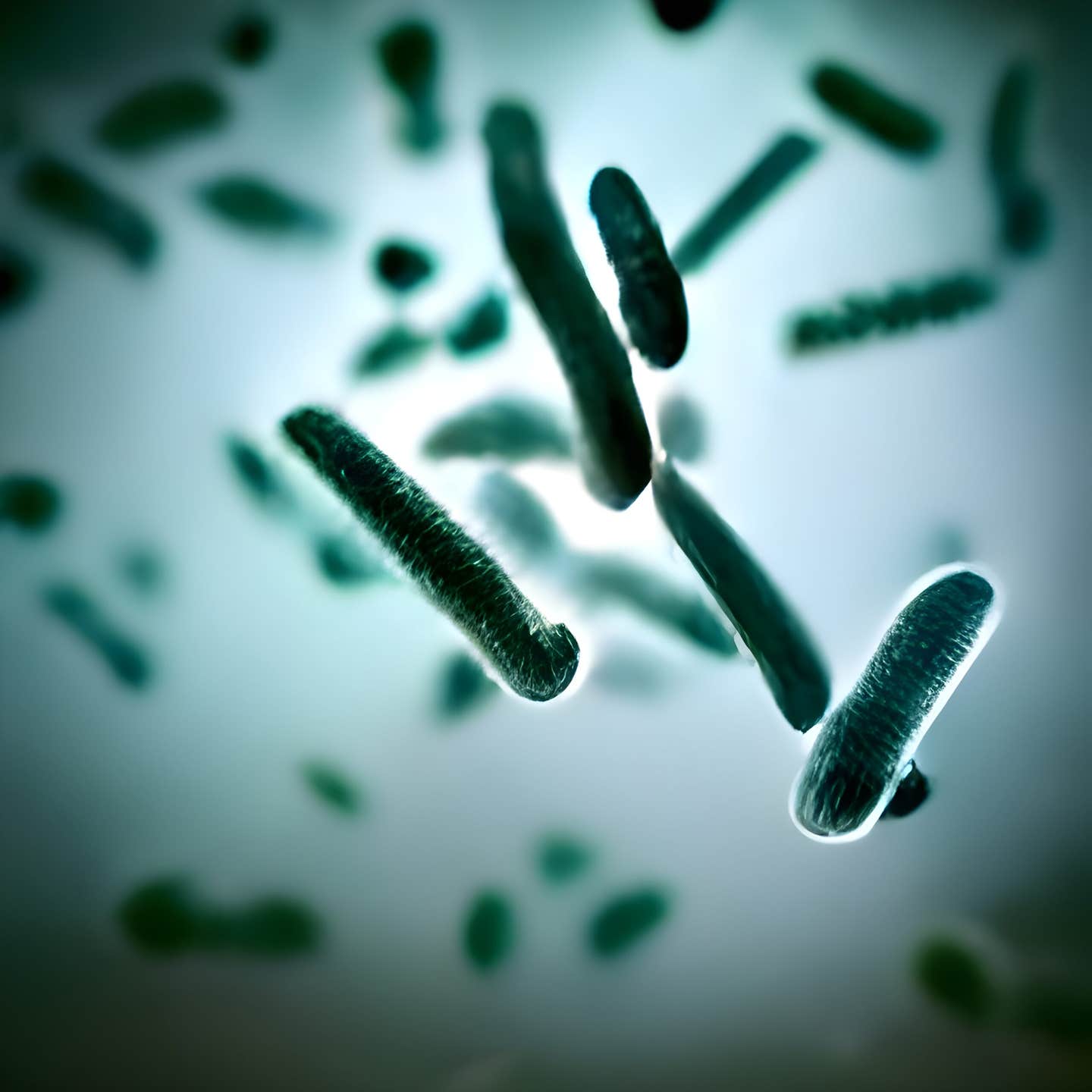1,000-year-old remedy revolutionizes modern treatment of antibiotic-resistant infections
Antibiotic resistance is an escalating challenge, with a pressing need for new antimicrobials to treat biofilm-associated infections.

This mixture of onion, garlic, wine, and bile salts demonstrated promising antibacterial properties with minimal damage to human cells. (CREDIT: Creative Commons)
Antibiotic resistance is an escalating challenge, with a pressing need for new antimicrobials to treat biofilm-associated infections. Researchers from the School of Life Sciences at the University of Warwick suggest that exploring natural antimicrobials might bridge the gap in antibiotic discovery.
Bacteria can exist either as individual planktonic cells or within a protective biofilm, the latter being particularly resistant to antibiotics. Treating biofilm-associated infections, such as those in diabetic foot ulcers, is notably difficult.
Dr. Freya Harrison, Jessica Furner-Pardoe, and Dr. Blessing Anonye from the University of Warwick have investigated natural remedies to address the antibiotic gap. Their study, "Anti-biofilm efficacy of a medieval treatment for bacterial infection requires the combination of multiple ingredients," published in Scientific Reports, highlights that medieval methods using everyday natural antimicrobials could provide new solutions.
The Ancientbiotics research team, formed in 2015, includes experts from diverse fields such as microbiology, chemistry, pharmacy, data analysis, and medieval studies, collaborating across Warwick, Nottingham, and the United States.
Building on previous research from the University of Nottingham on medieval remedies for MRSA, Warwick researchers recreated a 1,000-year-old remedy called 'Bald's eyesalve.' This mixture of onion, garlic, wine, and bile salts demonstrated promising antibacterial properties with minimal damage to human cells.
The remedy was effective against various Gram-negative and Gram-positive wound pathogens in planktonic culture. Its efficacy extended to biofilms of several pathogens:
- Acinetobacter baumanii: Often found in infected wounds of combat troops.
- Stenotrophomonas maltophilia: Linked to respiratory infections.
- Staphylococcus aureus: Causes skin infections, sinusitis, and food poisoning.
- Staphylococcus epidermidis: Common in infections involving indwelling devices and surgical wounds.
- Streptococcus pyogenes: Leads to conditions such as pharyngitis, tonsillitis, and scarlet fever.
These bacteria often infect diabetic foot ulcers and resist antibiotic treatments. Such infections can result in amputation to prevent the bacteria from spreading and causing lethal bacteremia.
The anti-biofilm activity of Bald's eyesalve, which includes garlic with allicin, is notable. While garlic alone is ineffective against biofilms, the combination of all ingredients in the remedy is crucial for its full activity.
Dr. Freya Harrison from the School of Life Sciences at the University of Warwick remarked, "We have shown that a medieval remedy made from onion, garlic, wine, and bile can kill a range of problematic bacteria grown both planktonically and as biofilms. Because the mixture did not cause much damage to human cells in the lab, or to mice, we could potentially develop a safe and effective antibacterial treatment from the remedy. Most antibiotics that we use today are derived from natural compounds, but our work highlights the need to explore not only single compounds but mixtures of natural products for treating biofilm infections."
Related Stories
Jessica Furner-Pardoe from the Medical School at the University of Warwick added, "Our work demonstrates just how important it is to use realistic models in the lab when looking for new antibiotics from plants. Although a single component is enough to kill planktonic cultures, it fails against more realistic infection models, where the full remedy succeeds."
In previous research, Christina Lee from the University of Nottingham's School of English examined Bald's Leechbook, an Old English leatherbound volume in the British Library. The Leechbook, one of the earliest known medical textbooks, contains Anglo-Saxon medical advice and recipes for medicines and treatments.
Christina noted, "Bald's eyesalve underlines the significance of medical treatment throughout the ages. It shows that people in Early Medieval England had at least some effective remedies. The collaboration which has informed this project shows the importance of the arts in interdisciplinary research."
By studying combinations of natural ingredients, rather than single compounds, researchers believe they can uncover new treatments for biofilm infections, offering hope for combating antibiotic-resistant bacteria and improving treatment options for infections like those found in diabetic foot ulcers.
Other medieval remedies that are being used in modern medicine
Several medieval remedies have been rediscovered and adapted for modern medicine. These ancient practices have sometimes revealed surprising efficacy, leading to their integration into contemporary medical treatments. Here are a few notable examples:
1. Honey
- Historical Use: In medieval times, honey was commonly used to treat wounds and burns due to its antimicrobial properties.
- Modern Application: Today, honey, particularly Manuka honey, is used in wound care to promote healing and prevent infection. Its antibacterial properties make it effective against antibiotic-resistant bacteria.
2. Willow Bark
- Historical Use: Willow bark was used in medieval Europe to relieve pain and reduce fever.
- Modern Application: The active ingredient in willow bark, salicin, is the precursor to modern aspirin (acetylsalicylic acid). Aspirin is widely used as a pain reliever, anti-inflammatory, and blood thinner.
3. Garlic
- Historical Use: Garlic was valued for its antimicrobial properties and used to treat various infections.
- Modern Application: Contemporary research supports garlic’s antimicrobial and cardiovascular benefits. It is used as a dietary supplement to help lower blood pressure and cholesterol levels.
4. Leeches
- Historical Use: Leeches were commonly used for bloodletting, believed to cure various ailments by balancing bodily humors.
- Modern Application: Leech therapy is used in modern medicine to improve blood circulation and prevent blood clots after reconstructive surgeries. Hirudin, a compound found in leech saliva, acts as a powerful anticoagulant.
5. Maggot Therapy
- Historical Use: In medieval times, maggots were sometimes observed to clean wounds by consuming dead tissue.
- Modern Application: Maggot debridement therapy (MDT) is used to clean chronic wounds and ulcers. Sterile maggots are applied to the wound to consume necrotic tissue, promoting healing and preventing infection.
6. Lavender
- Historical Use: Lavender was used for its calming effects and to treat various ailments, including anxiety and insomnia.
- Modern Application: Lavender oil is used in aromatherapy and as a natural remedy for anxiety, depression, and sleep disorders. Its effectiveness in reducing stress and promoting relaxation is well-documented.
7. Aloe Vera
- Historical Use: Aloe vera was used to treat skin conditions and wounds.
- Modern Application: Aloe vera is widely used in dermatology for its soothing and healing properties. It is found in many skincare products for treating burns, cuts, and other skin irritations.
8. Turmeric
- Historical Use: Turmeric was used in traditional medicine for its anti-inflammatory and antioxidant properties.
- Modern Application: Curcumin, the active ingredient in turmeric, is studied for its potential in treating inflammatory diseases, arthritis, and even cancer. It is used as a dietary supplement for its anti-inflammatory and health-boosting effects.
9. Fennel
- Historical Use: Fennel was used to aid digestion and treat colic in infants.
- Modern Application: Fennel is still used today for its digestive benefits. Fennel tea is recommended to relieve bloating, gas, and digestive discomfort.
10. Licorice Root
- Historical Use: Licorice root was used to treat coughs, sore throats, and digestive issues.
- Modern Application: Licorice root extract is used in modern medicine for its soothing effects on the throat and its role in treating gastrointestinal disorders such as ulcers and acid reflux.
These examples highlight how medieval remedies have been validated and refined through modern scientific research, leading to their current applications in medicine.
Note: Materials provided above by The Brighter Side of News. Content may be edited for style and length.
Like these kind of feel good stories? Get The Brighter Side of News' newsletter.



